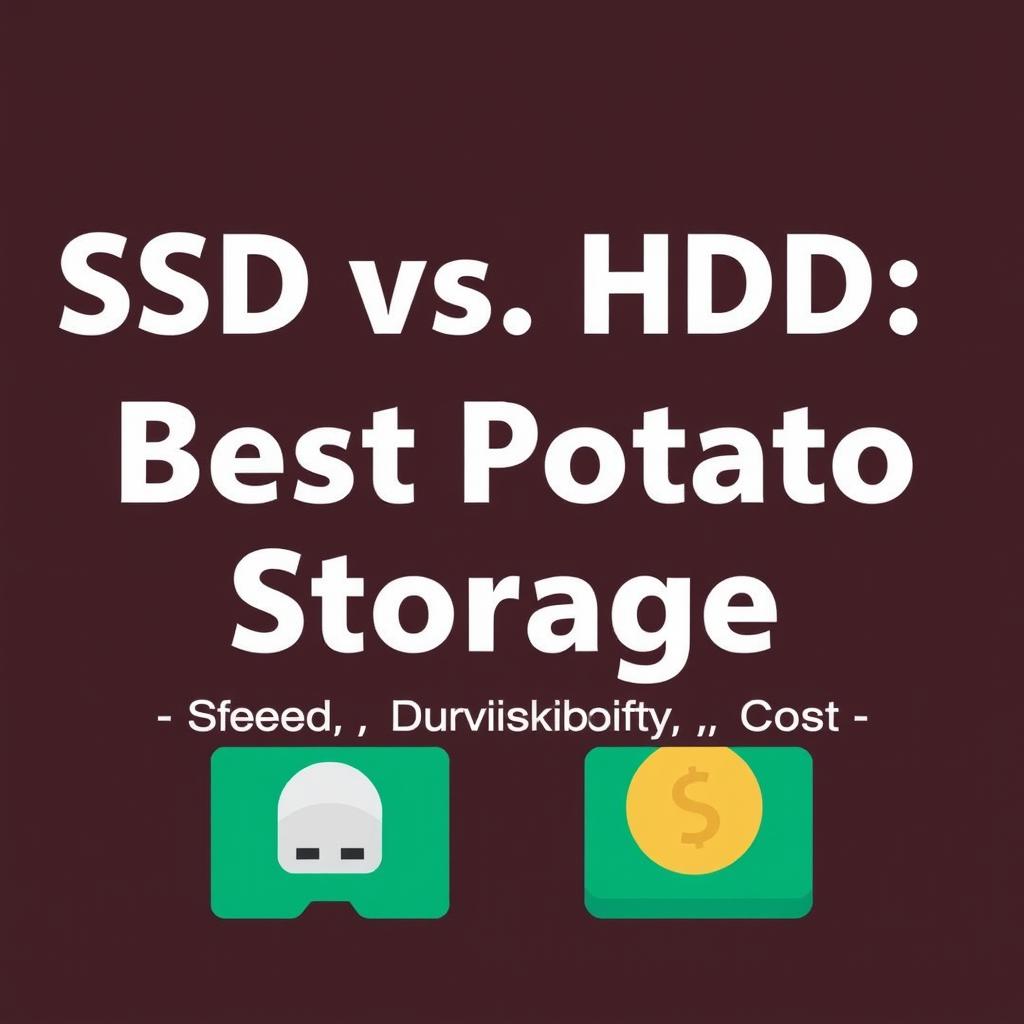Physical Address
304 North Cardinal St.
Dorchester Center, MA 02124
Physical Address
304 North Cardinal St.
Dorchester Center, MA 02124
Learning Tech with Potato
Learning Tech with Potato

SSD vs. HDD: Which Potato Storage is Best?
When it comes to storing your digital “potatoes”—whether they’re family photos, work documents, or your favorite games—choosing between a Solid State Drive (SSD) and a Hard Disk Drive (HDD) can feel overwhelming. Much like deciding how to store real potatoes (cellar vs. modern refrigeration), each storage solution has unique strengths and trade-offs. SSDs offer speed and durability, while HDDs provide affordability and capacity. But which one truly suits your needs? This article dives into the mechanics of both technologies, compares their performance, reliability, and cost-effectiveness, and helps you decide which “storage method” keeps your data fresh and accessible. Let’s dig into the roots of this debate.
Breaking Down the Technology: Modern Shelves vs. Traditional Cellars
SSDs and HDDs serve the same purpose—data storage—but their designs are worlds apart. HDDs use spinning magnetic disks and a mechanical arm to read/write data, reminiscent of storing potatoes in a traditional cellar: reliable but slow. SSDs, on the other hand, employ flash memory chips with no moving parts, akin to a climate-controlled smart shelf. This fundamental difference impacts everything from speed to vulnerability. HDDs are prone to physical wear (like a rotting potato in a damp cellar), while SSDs resist shock and temperature fluctuations. Understanding this core distinction is key to evaluating their real-world performance.
Speed and Accessibility: Who Delivers Freshness Faster?
If speed matters, SSDs dominate. With no mechanical parts, they access data in microseconds—ideal for tasks like booting systems or loading games. Imagine grabbing a potato from a neatly organized shelf versus digging through a cluttered cellar. HDDs, limited by spindle speeds (typically 5,400–7,200 RPM), lag behind. For sequential tasks (e.g., transferring large files), HDDs hold their ground, but random access (multitasking) highlights their weakness. SSDs also consume less power, reducing “spoilage” in laptops. However, speed comes at a cost: SSDs are pricier per gigabyte. Are those extra seconds (or minutes) worth the premium?
Durability and Longevity: Which Stays Crisp Over Time?
Durability is where SSDs shine. With no moving parts, they withstand drops, vibrations, and temperature changes—like vacuum-sealed potato bags. HDDs, however, risk mechanical failure; a single jolt can damage the disk. That said, SSDs have a finite number of write cycles (though modern models last decades under normal use). HDDs, while less durable physically, can theoretically overwrite data indefinitely. Storage environment also matters: SSDs resist humidity and dust better. For mission-critical data, SSDs’ reliability often justifies their cost, but HDDs remain viable for static, bulk storage—like a root cellar for seasonal preserves.
Cost vs. Value: Balancing Budget and Needs
HDDs win on price per gigabyte, offering terabytes of space for the cost of a mid-range SSD. If you’re storing massive media libraries or backups, HDDs are economical “cellars.” SSDs, though pricier, deliver value through efficiency and longevity. They reduce energy costs, improve productivity, and minimize downtime. For gamers, creatives, or professionals, the ROI is clear. Hybrid solutions (using an SSD for OS/apps and an HDD for bulk storage) offer a middle ground. Ultimately, your choice depends on whether you prioritize speed and resilience (SSD) or capacity and affordability (HDD).
Conclusion: Picking the Right Storage Bin for Your Spuds
SSDs and HDDs each excel in different scenarios. If you need speed, durability, and efficiency, SSDs are the “modern shelves” for your data, ideal for active use cases like gaming or professional workloads. HDDs, the “traditional cellars,” offer cost-effective bulk storage for archives or media. While SSDs are becoming cheaper, their premium pricing persists—so balance your budget against performance needs. For most users, a hybrid approach delivers the best of both worlds. Whether you’re storing precious memories or essential files, understanding these technologies ensures your digital potatoes stay fresh, secure, and ready to use.